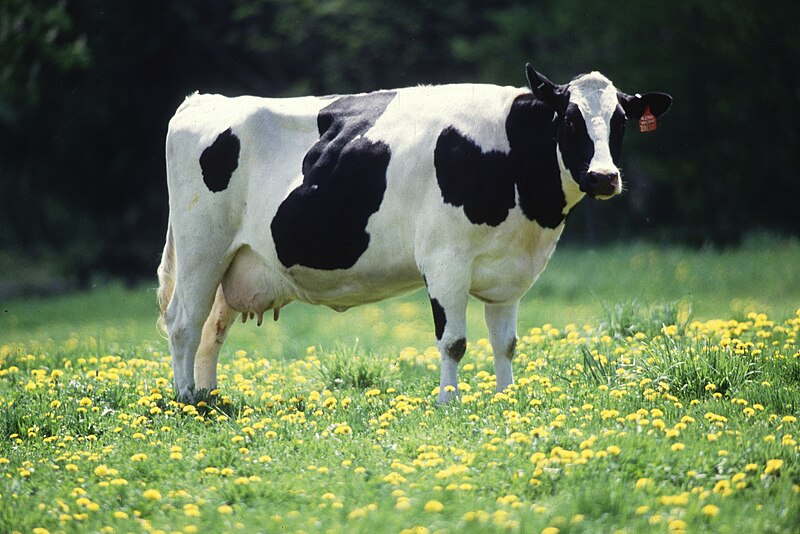File:Cow female black white.jpg

Kukura kwe chipandwa ichi: 800 × 534 pixels Zvimwe misimbiro: 320 × 214 pixels | 640 × 427 pixels | 1,024 × 684 pixels | 1,280 × 855 pixels | 2,700 × 1,803 pixels
Fayera repachivambo (2,700 × 1,803 pixels, file size: 887 KB, MIME type: image/jpeg)
Nhoroondo ye fayera
Dzvanya pa musi/nguva kuti uringe fayera sekuoneka kwaraita panguva iyoyo.
| Musi/Nguva | Mfananoudoko | Mitandu | Mushandisi | Komenda | |
|---|---|---|---|---|---|
| parizvino | 03:31, 29 Nyamavhuvhu 2023 |  | 2,700 × 1,803 (887 KB) | ReichLover1997 | Reverted to version as of 21:09, 24 May 2006 (UTC) |
| 00:42, 1 Gunyana 2018 |  | 2,190 × 1,680 (725 KB) | Hohum | Cropped, colour adjust | |
| 21:09, 24 Chivabvu 2006 |  | 2,700 × 1,803 (887 KB) | Siebrand | {{Information| |Description= {{nl|Een koe}} {{en|Because much of the cost of a cow is the feed and labor needed to maintain her, fewer but higher yielding cows mean lower priced milk. Dairy herd improvement ultimately benefits consumers. That's why it's j |
Kushandiswa kwe fayera
The following page uses this file:
Kushandiswa kwe fayera pasirose
Mawiki anotevera ayo anoshandisa fayera iri:
- Hushandiso pa ace.wikipedia.org
- Hushandiso pa ang.wikipedia.org
- Hushandiso pa an.wikipedia.org
- Hushandiso pa ar.wikipedia.org
- Hushandiso pa ast.wikipedia.org
- Hushandiso pa ast.wiktionary.org
- Hushandiso pa az.wiktionary.org
- Hushandiso pa ba.wikibooks.org
- Hushandiso pa be.wikipedia.org
- Hushandiso pa bg.wikipedia.org
- Hushandiso pa bjn.wikipedia.org
- Hushandiso pa bn.wikipedia.org
- Hushandiso pa bn.wikibooks.org
- Hushandiso pa bs.wiktionary.org
- Hushandiso pa ca.wikipedia.org
- Hushandiso pa ca.wikibooks.org
- Hushandiso pa ca.wikiquote.org
- Hushandiso pa ca.wiktionary.org
- Hushandiso pa ceb.wikipedia.org
- Hushandiso pa chr.wikipedia.org
- Hushandiso pa ckb.wikipedia.org
- Hushandiso pa csb.wiktionary.org
- Hushandiso pa cy.wikipedia.org
- Hushandiso pa dag.wikipedia.org
- Hushandiso pa da.wikipedia.org
- Hushandiso pa da.wiktionary.org
- Hushandiso pa de.wikipedia.org
- Hushandiso pa de.wiktionary.org
Ringa kushandiswa kumwe kwe vupasirose kwe fayera rino.